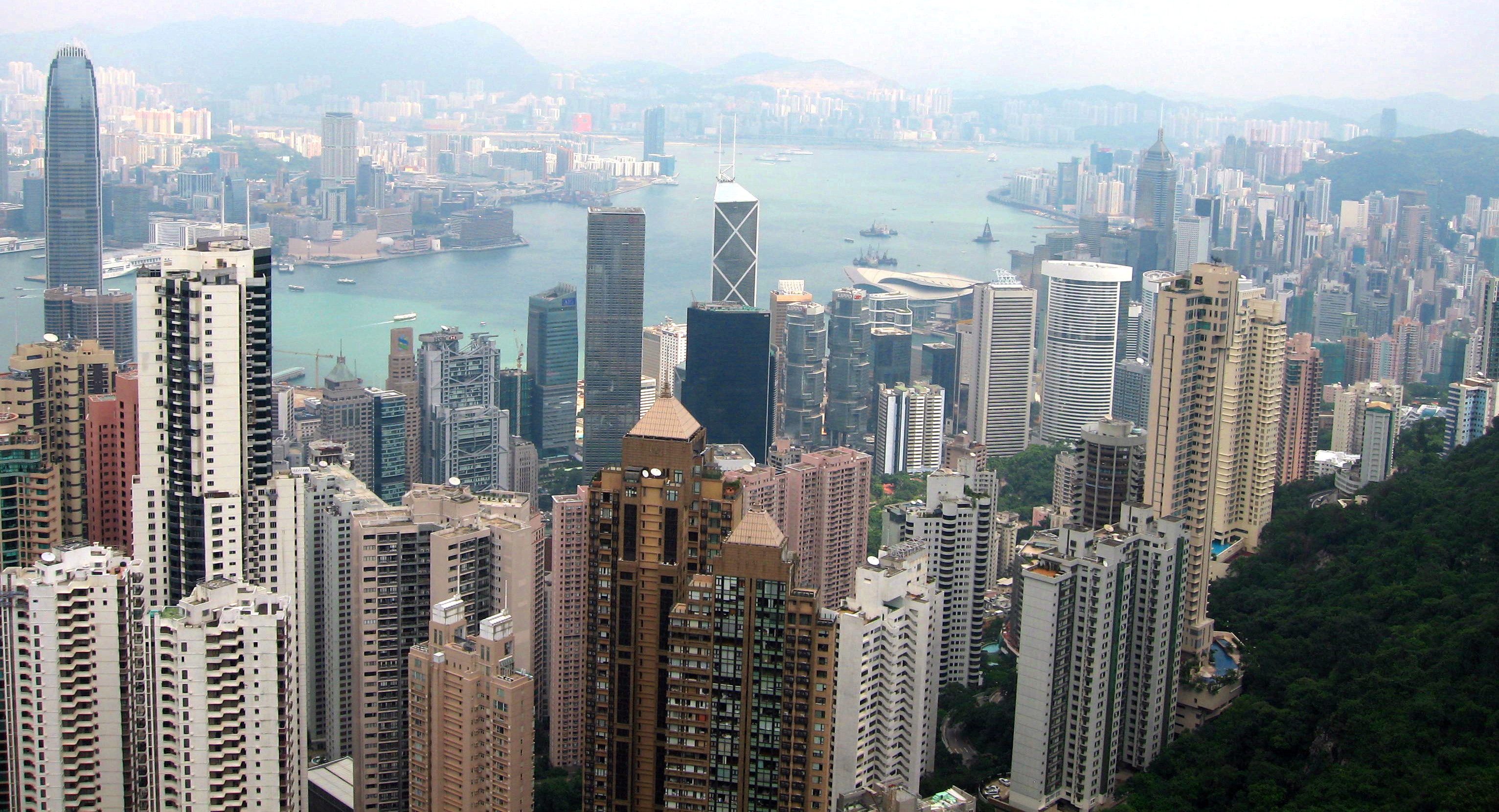
Downtown Hong Kong
“Hong Kong: An Extended Layover” published in International Travel News, October 2009, Vol 34, No 8, pp 36-42 (http://www.intltravelnews.com/)
Many travelers to Asia find themselves with a layover in Hong Kong, a thriving metropolis of 7 million people where East collides with West. Reclaimed by China in 1997 but still a melting pot of international commerce, Hong Kong is awash in gleaming high rises and blinking neon signs touting some of the biggest names in business.
If you arrive in Hong Kong after a long flight en route to another Asian destination, there are worse places to sleep off jet lag and begin acclimating to the time zone and culture changes. Hong Kong has a reputation for being a very expensive place to visit, but my husband, Steve, and I found some ways to explore, enjoy and not break the bank.
Where to Stay
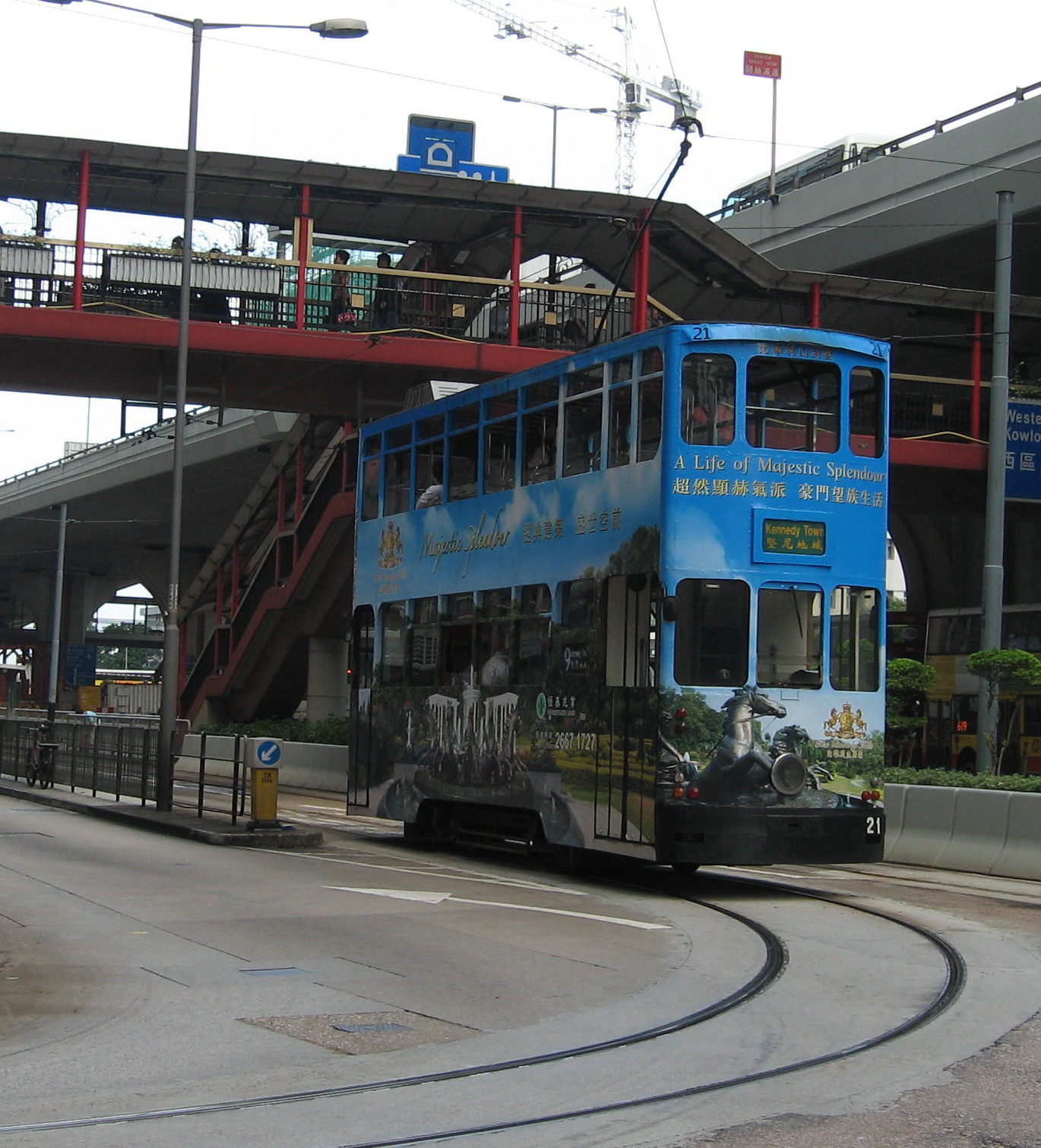
Double-decker tram
Lodging is likely to be your greatest expense. If you have any hotel points squirreled away in frequent-stay programs, Hong Kong is an ideal place to use them as many Western hotel chains have locations in Hong Kong. We used Marriott points to stay at a lovely Courtyard by Marriott (www.marriott.com/hotels/travel/hkgcy-courtyard-hong-kong) which turned out to be shiny and new, and unlike any Courtyard you’ve experienced in the US. A sleek and modern high-rise, it was upscale, with attentive staff, a full service restaurant which served first-rate food (I gorged on dim sum every morning at the breakfast buffet), and many amenities. Located in the Western District, adjacent to the downtown Central District, it was accessible by multiple forms of public transportation. We took the very convenient Airport Express (www.mtr.com.hk/eng/airport_express/intro_index) train from the airport to downtown, and then hailed a cab for a short ride to the hotel until we could get our bearings with the tram and subway.
We rode the historic, charming double-decker trams frequently, sometimes riding them to the end of the line and back if we were having a jet-lag related sinking spell, just to get off our feet. Running along the waterfront, they are a bargain at HK$2/person (US$0.26).
Discovering Hong Kong (Day 1)

Incense burning at the Man Mo Temple
I stumbled upon the Hong Kong tourism website (www.discoverhongkong.com/usa) while doing some pre-trip research, and was enthralled with the idea of completing the walking tours described there, which include detailed maps. Three walking tours are described in a downloadable format that is easy to print to take with you. I printed all three but primarily used the Central & Western District tour, deviated a bit to catch the Peak Tram, then picked up the Wan Chai tour.
We started the walking tour near our hotel at the Western Market, noting the not-unpleasant mild odor of dried seafood that wafted through the neighborhood. Almost every shop was crammed to the rafters with innumerable varieties of dried fish and it became our wake-up call to pay attention to where we were going when we smelled the fish odor—it meant we were near our hotel. The Western Market is a historical building built in the Edwardian style in 1906. Now filled with shops, it has had a varied history as the Harbor Office and food market.
Proceeding along Wing Lok Street to Des Voeux Road and down Ko Shing Street we passed through neighborhoods specializing in shops carrying specific wares, from ginseng used to ensure longevity and energy, an exotic assortment of dried fish, and finally a dizzying array of dried herbs used in the flourishing medicinal trade. Many shops were stocked with different varieties of bird’s nests, used to make soup, the most valuable “red blood” nests costing up to US$10,000/kg. We then entered the antiques neighborhood, but we were there too early, so most of the shops were closed. More interested in sightseeing than shopping, we headed toward the Man Mo Temple, a fascinating glimpse into the traditional past in this small temple overshadowed by the urban structures surrounding it. This Taoist temple honors gods of literature, Man, and war, Mo, the calligraphy brush and the sword respected side by side. A sensory experience enveloped us as we entered the temple as thick clouds of incense drifted down from huge cones of incense suspended from ceiling, looking at first like ornamentation until our eyes adjusted to the gloom. A bronze bell and sedan chairs from the late 1800’s are also on display.
A Unique Attraction

Restaurants and shops are visible from the escalator
An unusual and well-known feature of Hong Kong is the longest covered escalator in the world at 2,625 feet (800 meters) long. Known as the Mid-Levels Escalator it connects downtown to the Mid-Levels area where many high-rise residences are located. The escalators are in heavy use by residents, who include many expatriates, during commute hours. The escalators run downhill from 6 am – 10 am, then uphill for the rest of the day until midnight. We took the 20 minute ride up the escalators, and observed many shops and cafés located across a narrow sidewalk from the escalators. We deviated here from the walking tour in favor of riding all the way to the top where we encountered a helpful map posted near the exit of the escalator. Signs directed us toward the Hong Kong Zoological and Botanical Gardens, and the Peak Tram. When we found the zoo, which is free of charge, we walked through a lovely aviary and garden. Heat and humidity were building so we rested on a bench and enjoyed the grounds for a short time.
The Peak Tram
The Peak Tram (www.thepeak.com.hk) is located across the street from the zoo and provides transportation up an exceedingly steep hill, ranging from a gradient of 4 to 27 degrees, to the top of Victoria Peak at 1,817 feet, for HK$49 (about US$6). The reward at the top of the 1.4 km funicular railway is a beautiful, panoramic view of the harbor, downtown Hong Kong, Kowloon and, from the other side, views to the south surprised us with wide swaths of green belt, beaches and expansive views of the South China Sea. We enjoyed the views, but didn’t enjoy running the gauntlet through the multiple escalators wending through an over-commercialized multi-level mall, pulsing with music and jam-packed with jewelry, high-end international clothiers and tacky tourist knick-knacks, to get to the viewing platform, a minor inconvenience. We gazed at some old colonial buildings tucked into the tropical forest and reflected on what changes the walls had seen through the years from the time the harbor was bordered by barren rock and a few fishing villages when claimed by the British in 1842, now transformed into one of the biggest business and financial centers in the world. We took pleasure in the cooling breezes at the higher elevation, a welcome respite from the steaming temperatures as the sun rose higher in the sky.
Wan Chai
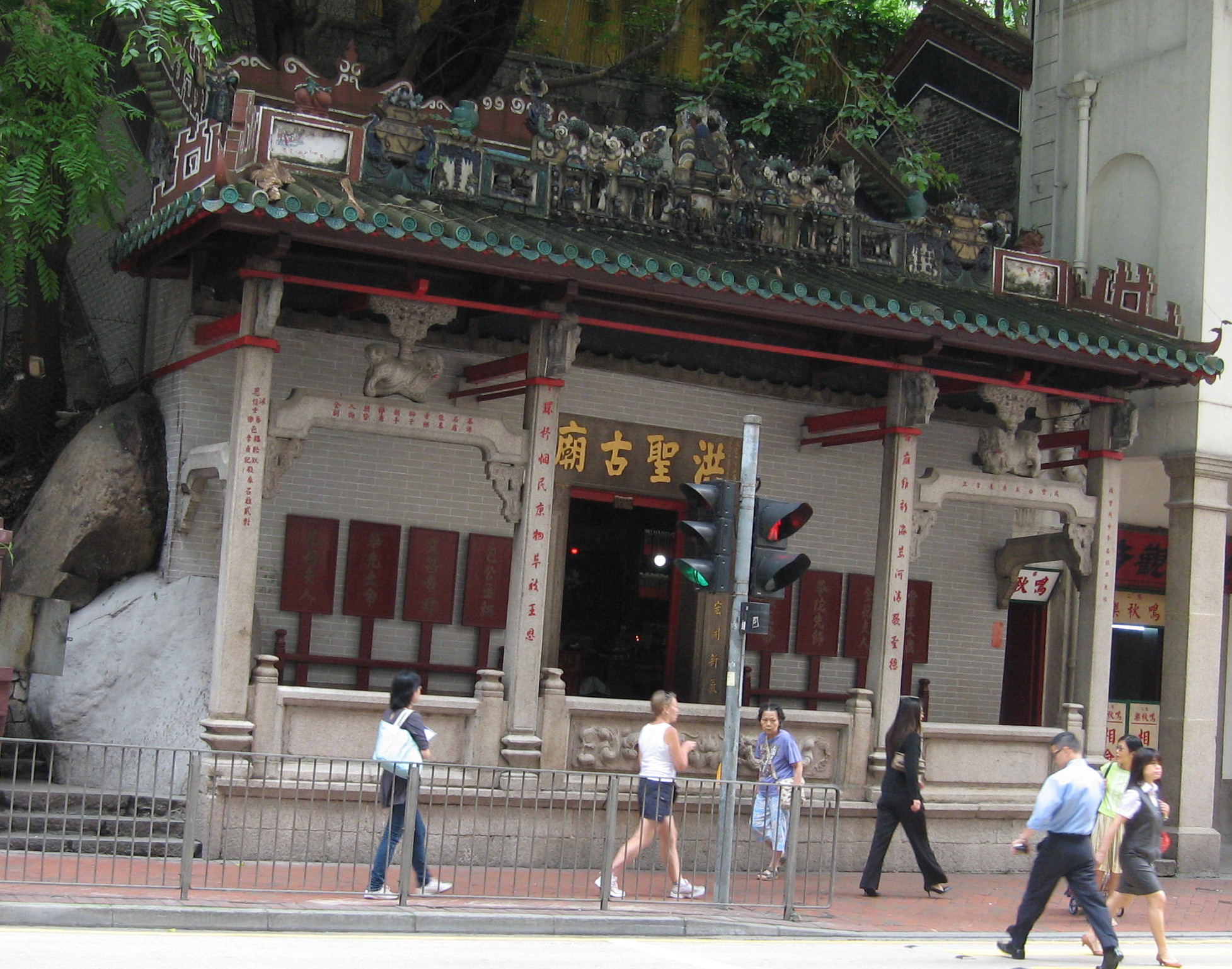
Hung Shing Temple
Descending via the Peak Tram, we made our way through the now fetid air and walked toward Des Voeux Road to catch the tram to Wan Chai to pick up the Wan Chai District walking tour. This bustling, crowded neighborhood is described as an endless series of reclamation projects, starting with the creation of the neighborhood, which used to stand in Hong Kong Harbor water. We went down a narrow street buzzing with the activity of the Tai Yuen Street Market, filled with stalls selling food, clothing, shoe repair shops, pipes, toilets and anything else one could think of.
We had some difficulty locating the tiny Hung Shing Temple, probably due to the effects of jet lag taking over, but were glad we persevered as it, like the Man Mo Temple, is enchantingly out of place wedged in between apartments on the busy street, built around a large boulder.
Star Ferry Journey
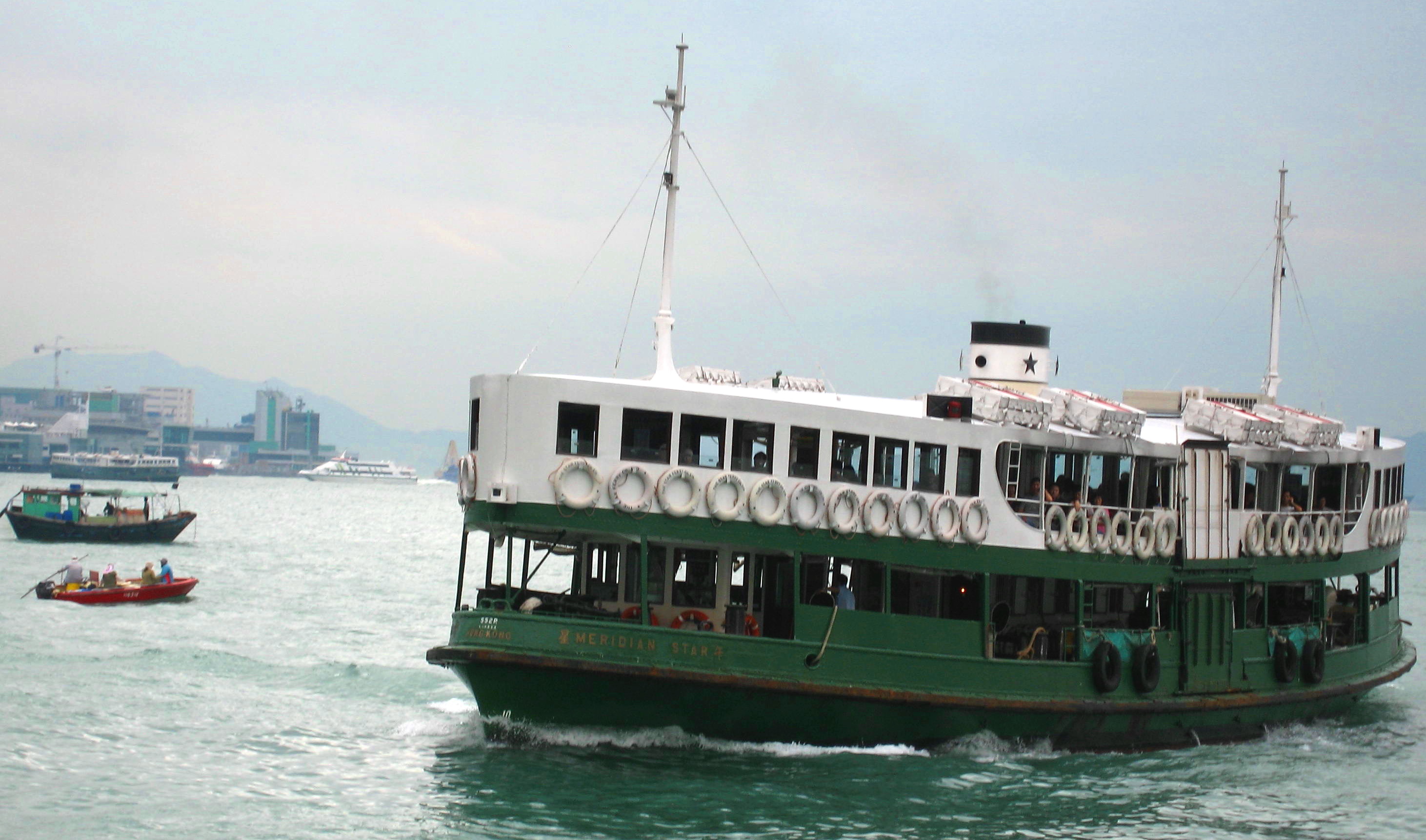
Star Ferry
We proceeded toward the harbor and passed through the Southern Playground, which was a bit sterile with no trees or grass but with several soccer fields and grandstands. Becoming a bit weary we again became distracted from the walking tour and started following signs to the Star Ferry (www.starferry.com.hk), finding a large ferry terminal on the other side of the huge Convention Center. Feeling drowsy and ready to get off our feet we took a ferry (a bargain at HK$2.20, or about US$0.30) to Tsim Sha Tsui across the harbor on the Kowloon side, for no reason other than to get out on the water and get another view of the city.
We disembarked from the Star Ferry on a mission to find the landmark Peninsula Hotel, still one of the world’s grandest hotels, as it has been since opening in 1928. Located in a majestic colonial building overlooking Victoria Harbor in Tsim Sha Tsui, Kowloon, it is world renowned for its luxury, maintaining a fleet of 14 Rolls-Royce limos and their own helipad. Gazing at the throne-like exterior evoked almost forgotten memories of my first trip to Asia. Just four years old, I was being toted around by my mother enroute to joining my father in Lahore, Pakistan, where we would live for the next four years, the beginnings of endless adventures around the globe for our family. Suffering from jet lag, culture shock and general toddler petulance, I reached the end of my rope during a stay at the Peninsula Hotel, diving under a white linen bedecked table and refusing to come out of my safe refuge with my long suffering doll, Chuz. Luckily for us, the polished staff took it all in stride and coaxed me out with beautifully folded origami animals that they made on the spot, to my mother’s great relief. On this trip I was charmed to see an ad for the Peninsula Hotel showing a white gloved, uniformed doorman opening the door for a small child clutching her doll, mimicking our experience so many decades ago.
Kowloon
The area surrounding the Peninsula Hotel has been taken over by international retailers and I felt like we could have been at any one of a number of shopping districts in the U.S.–Rodeo Drive in Los Angeles, Union Square in San Francisco, or Kalakaua Avenue in Honolulu come to mind Lots of energy but hardly unique. Wrapping up our first day we took the ferry back to the Central District and hopped on a tram to get home. We were ready for a nap, but felt a sense of accomplishment since we managed to stay up all day and see a large chunk of Hong Kong as our friends slumbered through the night back home.
Hiking in Hong Kong? (Day 2)
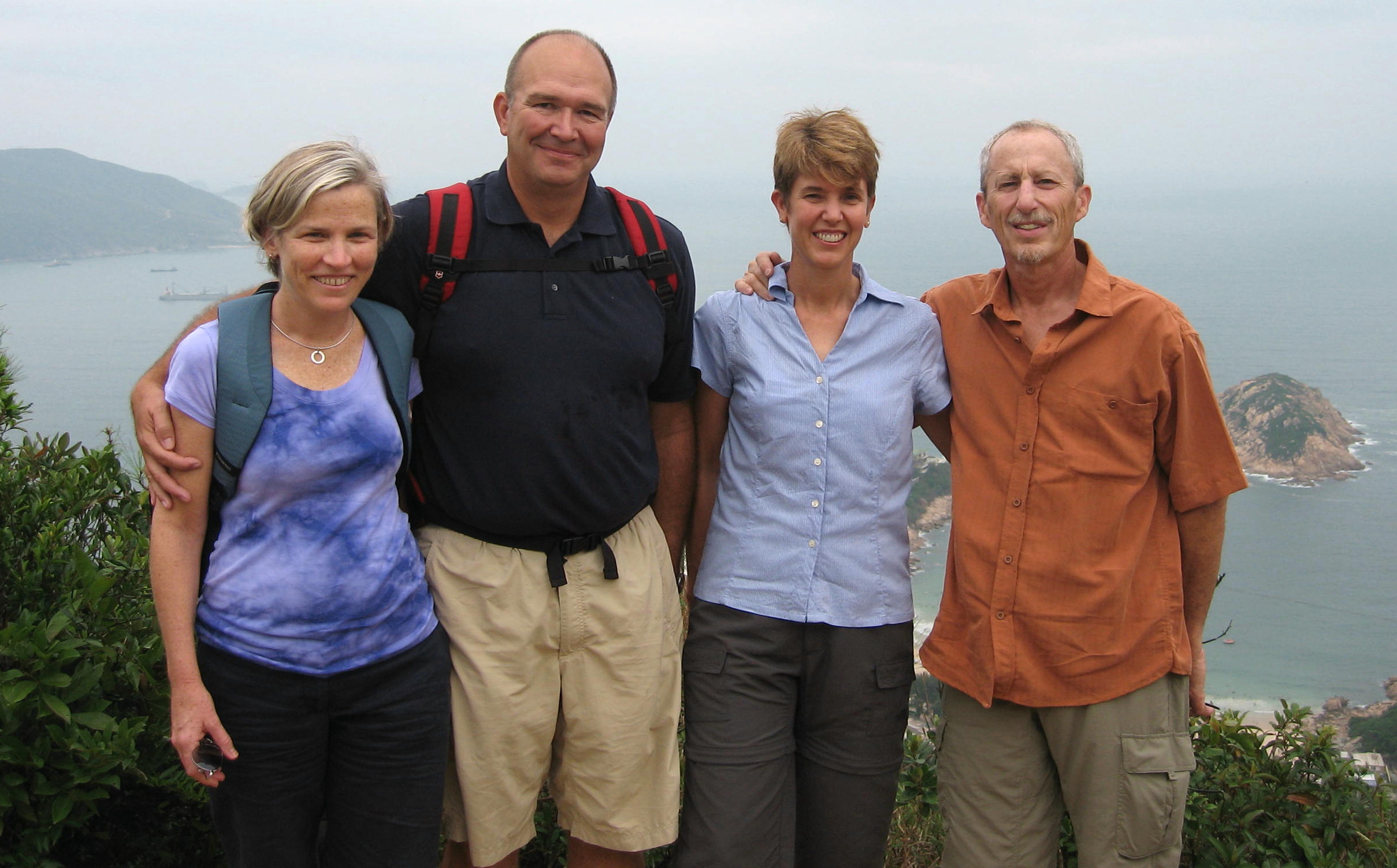
Tracey, Joe, Inga & Steve on the Dragon’s Back Trail
We had a second day and were fortunate to have friends, Joe and Tracey, who have lived in Hong Kong for 15 years. They showed us a side of Hong Kong I didn’t previously know existed. When they offered a choice of shopping or hiking, I quickly chose hiking, not knowing what that might mean in the urban metropolis. Tracey, Joe and their two children, Amy (12) and Neil (8) arrived at our hotel in a taxi and directed the driver to take us to Shek O, which I easily located on our map included in our Lonely Planet guidebook. They have a car and driver but due to the non-existent parking at the trailhead it was easier to take a taxi. The trail head was well marked and we set off on the Dragon’s Back trail, a loop that took us high on a ridge on the southern end of Hong Kong Island, looking down on the same beautiful beaches we had observed from the Peak Tram. We took our time enjoying the green, open spaces, a welcome change from the humid, bustling city we left behind. The moderate trail had many steps, and was graced with several benches along the way so we could pause and catch the cooling breezes. We looked down on an exclusive golf course and huge, multi-million dollar houses. When we arrived back at the trail head it was only a matter of moments before we were able to hail two cabs to take us back to town.
After the hike we went by Amy’s American School and stopped in at the American Club for a bite to eat, both of which evoked more memories, this time of the many schools and clubs I had attended growing up in various parts of Southeast Asia, none of which were remotely as luxurious as the Hong Kong versions. The American Clubs of my past featured a pool surrounded by a basic restaurant and possibly a recreation room where movies were sometimes shown, all rather worn and aging. The Hong Kong American Club had an Olympic size pool, market featuring imported luxury items, 2-story kids club stocked with every manner of plaything and computers, several restaurants and bars, classroom and activity rooms, library, tennis courts, all with expansive water views.
Museum and market visits (Day 3)

Brennan Torpedo
If you have a third day, which we did on our way back to the U.S. from Viet Nam, which again involved a layover in Hong Kong, you might consider checking out some of the many Hong Kong museums. Tracey had been to them all, and was a bit jaded since she’s lived there so long. However, one museum, the Museum of Coastal Defense (www.lcsd.gov.hk/CE/Museum/Coastal/index), stood out in her mind as unique, so we took that as a recommendation.
The Museum of Coastal Defence, converted from the Lei Yue Mun Fort, was located on the other end of the harbor from the Western District where we were staying, and deciding that the tram was too slow, we took the subway, which is very efficient, clean and modern. From the Sheung Wan station to Shau Kei Wan was HK$15/person (US$1.9) and got us within a short walk of the museum.
There were several highlights from the museum that made an impression.
First, the island is in a very strategic position geographically, being located near the coast in the South China Sea, which led to a long history of invasion. The Lei Yue Mun Fort, built by the British in the 1880’s guarded Victoria Harbor at the narrow channel. The Redoubt now houses the exhibit areas that cover distinct periods over the 600 year history of coastal defense, beginning with the Ming period in the 1300’s to the present. Many restored relics can be seen from a trail that encircles the museum.
Second, the Chinese have an extensive history of archery and we watched a fascinating video chronicling the 18 months it can take to create a handcrafted bow. After seeing the process involving shaping, soaking and stretching of material it became clear how the process could take so many months to produce a bow that was a practical piece of art.
Third, the unique Brennan torpedo, built on this site in the late 1800’s, is on display in its original setting, looking as if it is ready to defend the harbor from invaders entering through the adjacent narrow waterway. The Brennan torpedo was the world’s first functional guided missile, powered by two contra-rotating propellers that were spun by rapidly pulling out wires from drums wound inside the torpedo.
Since our trip was coming to its conclusion, we finally succumbed to the beckoning Stanley Market (www.hk-stanley-market.com), previously a fishing village, now transformed into a shopper’s paradise. We took a cab to the south end of the island and disembarked into a warren of narrow lanes lined with shops where one can find collectibles, curios, silk clothing, shoes, handbags, and more. We found some mementos, bargained a little, finished our shopping for friends and family back home, and didn’t mind carrying it since this was the last leg of our journey.
Summing Up

Bird’s nests for soup — Western District
We found Hong Kong to offer a kaleidoscope of sights and sounds that opened our eyes to different sides of Hong Kong. We peeked into ancient traditions, remnants of colonial times, and drank in the excesses of modern urbanity laced with vast tracts of green space. We left with the allure of the promise of more, and a long list of things we want to experience on our next trip through Hong Kong.
Information:
Courtyard by Marriott-Hong Kong, located between Des Voex Road and Connaught
167 Connaught Road West
Hong Kong, China
www.marriott.com/hotels/travel/hkgcy-courtyard-hong-kong
MTR: Airport Express Train & Subway Information
www.mtr.com.hk/eng/airport_express/intro_index
Hong Kong Tourism Board
www.discoverhongkong.com/usa
Peak Tram
www.thepeak.com.hk
Star Ferry
www.starferry.com.hk
Museum of Coastal Denfence
Closed on Thursdays and the first two days of the Lunar New Year.
From MTR Shau Kei Wan Station Exit B2, walk along Shau Kei Wan Main Street East, cross the road upon reaching Tung Hei Road, then walk up hill for 5 mins.
175 Tung Hei Road, Shau Kei Wan, Hong Kong Island, Hong Kong
www.lcsd.gov.hk/CE/Museum/Coastal/index
Stanley Market Road, Stanley, Hong Kong Island
www.hk-stanley-market.com
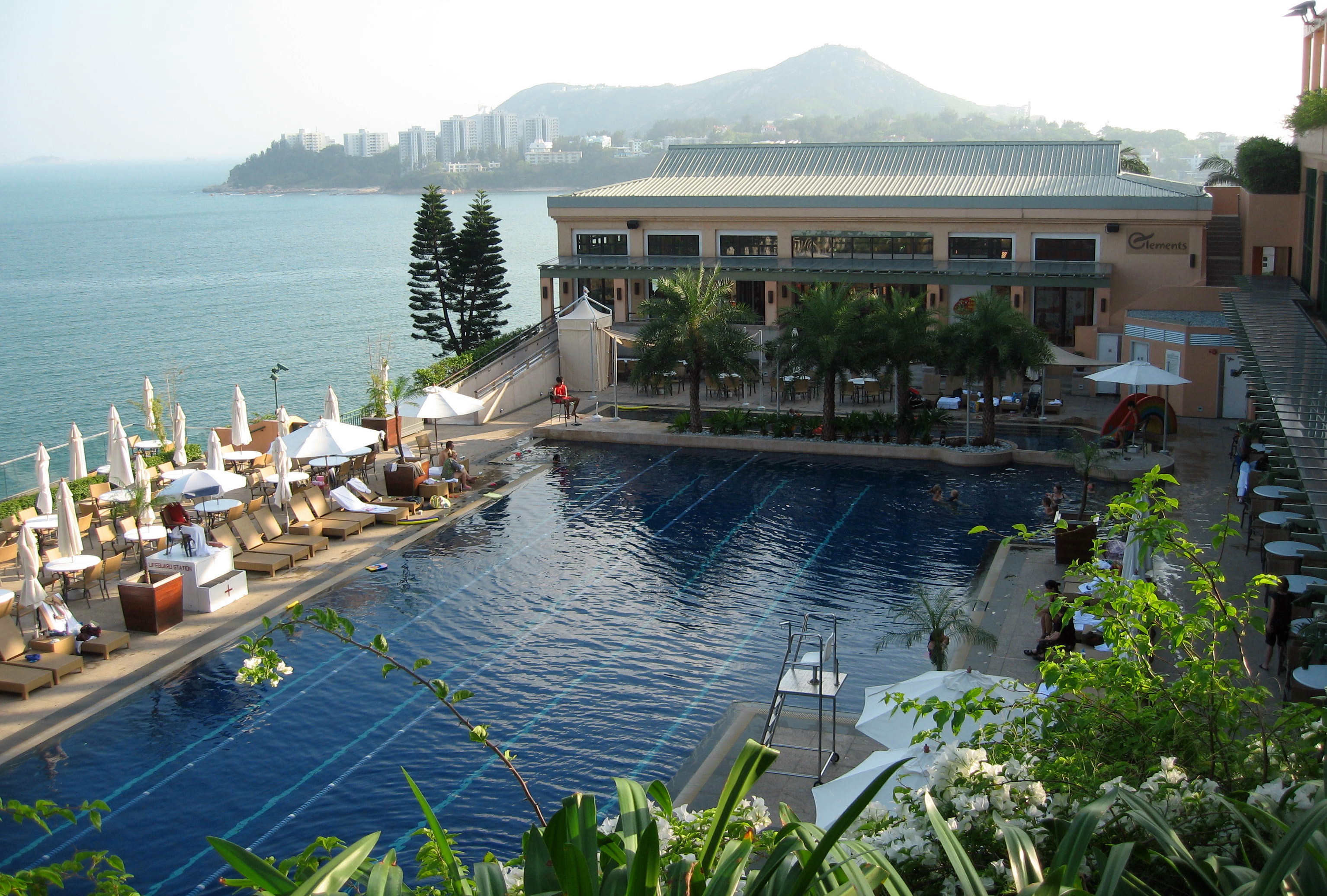
American Club